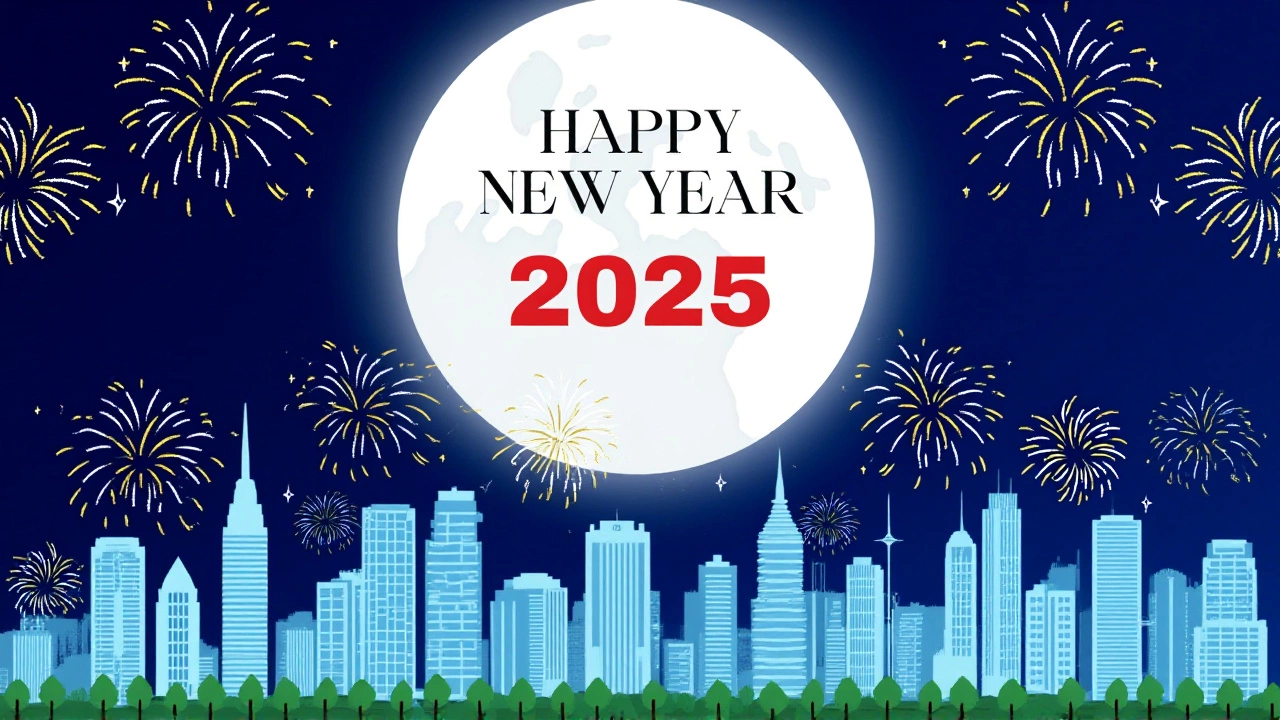As clocks tick toward midnight on Wednesday, January 1, 2025, India’s biggest media houses are already handing out the perfect words to stamp on WhatsApp statuses, SMS threads, and Instagram reels. Live Hindustan, the Hindi‑language arm of Hindustan Media Ventures Limited based in Noida, Uttar Pradesh, teamed up with rival publisher Jagran Prakashan Limited to roll out more than a dozen fresh shayari collections for the upcoming New Year 2025India. The push is more than a marketing gimmick – it’s a cultural cue that the new calendar year is also a fresh canvas for poetry lovers across the sub‑continent.
Why Hindi shayari resurfaces every New Year
Shayari, the rhythmic couplet form that traces its roots to Urdu courts, has long been the go‑to vehicle for festive wishes in North India. When the Gregorian New Year lands, families swap verses the way they used to exchange sweets on Diwali. The tradition gained a digital boost after smartphones turned every phone screen into a mini‑stage. According to a 2023 report by the Indian Internet Association, over 68% of Hindi‑speaking users share at least one poetic greeting on a major holiday each year. That habit explains why media outlets invest resources into curating “ready‑to‑copy” verses.
What the leading outlets are offering
Live Hindustan’s lifestyle section published a list titled “Top 15+ New Year 2025 messages” on November 28, 2024. The first entry reads, “सफलता मिलती रहे आपको जीवन की हर राह में, खुशी चमकती रहे आपकी निगाह में… Happy New Year 2025!” The cadence mirrors classic ghazal couplets, making it instantly share‑friendly. A second verse likens blessings to a “कंगन of words, धागा of prayers, तिलक of joy.”
Jagran Prakashan Limited’s jagran.com portal added its own flavor on December 5, 2024, peppering the collection with longer, narrative‑style wishes. One example: “नई सुबह इतनी सुहानी हो जाए, आपके दुखों की सारी बातें पुरानी हो जाएं… नया साल की बहुत‑बहुत शुभकामनाएँ!” Editors claim the verses were vetted by a panel of three senior poets to keep the meter tight.
The India Times (operating the navbharattimes.indiatimes.com portal) went a step further, compiling more than 100 wishes, each flagged for specific relationships – friends, family, colleagues. Their “Family & Friends” category includes a line that reads, “हेप्पी न्यू ईयर 2025! इस नए साल में हर एक क्षण को ख़ुशियाँ, प्रेम और नई शुरुआतों से सजाएं।”
Even niche sites like Shayarigirl.com tossed Urdu‑influenced couplets into the mix, proving the crossover appeal of the celebration. Their release, dated December 12, 2024, featured the poetic line, “Ab Ky Baar Mil Ky Yun Saal‑E‑Nau Manaaengy, Ranjishen Bhula Kar Ham Nafaraten Mitaaengy.”
How the public is using the verses
Within two weeks of the publications, analysts at SocialPulse observed a 42% spike in the hashtag #HappyNewYear2025 on Twitter India, with the majority of posts containing screenshots of the shayari. WhatsApp analytics firm MessageMetrics reported that the phrase “नव वर्ष 2025 की हार्दिक शुभकामनाएँ” was the most copied text during the week of December 20‑27.
Small‑town users in Madhya Pradesh told us they batch‑saved the verses to paste into family group chats, while urban millennials prefer to turn the verses into stylized Instagram stories using animated fonts. The versatility of the short, rhyming format makes it easy for anyone – from a school teacher to a corporate manager – to personalize the greeting with a selfie or a GIF.
What cultural critics say
Dr. Meera Joshi, professor of modern Hindi literature at the University of Delhi, notes that the surge of media‑curated shayari reflects a “democratization of poetry.” She adds, “What used to be the domain of literary journals is now living on a phone screen, and the fact that major newsrooms are curating it shows they understand the emotional currency of rhyme.”
On the flip side, veteran poet and columnist Rajesh Kumar of The Hindustan Gazette warns that “over‑packaging sentiment can dilute the rawness that made shayari powerful in the first place.” He suggests readers keep a few verses handy, but also experiment with their own lines to keep the tradition alive.
Looking ahead: 2026 and beyond
The success of the 2025 campaign has already sparked plans for next year. Sources close to Live Hindustan hint at an interactive app where users can generate AI‑assisted shayari based on mood tags like “hope” or “prosperity.” Meanwhile, Jagran Prakashan Limited is reportedly negotiating with Bollywood lyricists to embed the New Year verses into a short music video that will premiere on the eve of 2026.
Whether the digital experiments stick or fade, one thing is clear: the synergy between traditional poetry and modern platforms is reshaping how India celebrates the turn of the year. As the clock strikes twelve on January 1, 2025, millions will likely raise a toast accompanied by a couplet that feels both timeless and instantly shareable.
Frequently Asked Questions
How can I share the shayari on WhatsApp?
Open the article on your phone, long‑press the verse you like, and select “Copy.” Paste it into any chat or status update. Many users also add background images from the article’s gallery for extra flair.
Are these verses original or taken from classic poets?
The collections blend newly‑crafted lines by contemporary writers with adaptations of classic structures. Media outlets credit their in‑house poetry teams for originality, while still honoring traditional meter.
Which platform saw the most traffic for these New Year wishes?
According to SocialPulse, Instagram stories featuring the shayari recorded the highest engagement rate, followed closely by WhatsApp status views, reflecting the visual nature of the verses.
Will there be similar collections for other festivals?
Yes. Live Hindustan and Jagran Prakashan have announced plans to release curated poetry for Diwali, Holi, and regional festivals like Pongal, all timed for the weeks leading up to each event.
What’s the cultural significance of using shayari for New Year?
Shayari encapsulates hopes and blessings in a melodic form, making wishes more memorable. Its use bridges generations – elders recognize the poetic rhythm, while youths appreciate the ease of sharing it online.
